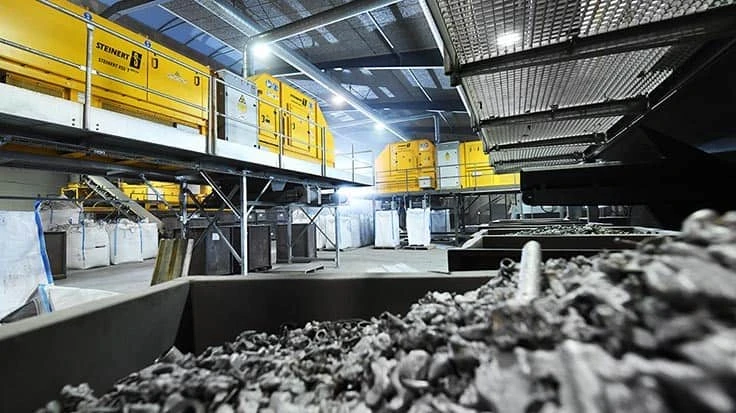
Steinert
Steinert GmbH, Cologne, Germany, has released the XSS T EVO 5.0 generation X-ray transmission unit for sorting scrap and aluminum. Dry density sorting using X-ray transmission is a method that is used by many scrap recyclers around the globe. With processors of high-performance aluminum in mind, the updated XSS T EVO 5.0 is used to recover free heavy metals, aluminum compounds, free magnesium and wrought and cast aluminum parts.
According to a news release from Steinert, the company says its ongoing development work ensures specific benefits for the sorting process.
The machine features multilayer data evaluation (MDE) software, enabling it to use more distinguishing criteria for detection thanks to high-resolution object recognition and by undertaking classification in parallel. Steinert says complex sorting tasks, such as magnesium detection, can be solved easily. Automatic X-ray monitoring and calibration (AXM) helps achieve consistently high detection and sorting quality.
Steinert reports that it also improved the hardware on its XSS T EVO 5.0. The high-resolution pitch of 6.25 millimeters enables more efficient sorting of fine material down to 5 millimeters. The X-ray scan area is cleaned automatically in the new generation of machines, which Steinert says reduces the amount of manual cleaning needed and maintains a consistently high level of detection quality.
In addition, Steinert provides a four-year warranty on the X-ray source and X-ray sensors. It also features some continuing software and hardware updates. The company says its warranty provides operational reliability and keeps operating costs low.
E-book for guidance
Steinert also offers a solution guide that can be downloaded as an e-book to provide an initial overview of the opportunities provided for sorting aluminum scrap and other materials. Although aluminum scrap comes from different sources, such as profiles and plates, incineration bottom ash, shredder systems or dense media separation, the stages of the sorting process are all similar: recovering nonferrous metals and upgrading the recovered metals, producing pure metal types.
According to Steinert, the e-book provides insight into both the heart of the systems—the Steinert XSS T EVO 5.0—as well as the upstream magnet technology and downstream fluorescence technology, which is of benefit to operators of aluminum shredders, secondary smelters or processors of waste incinerator ash. The downstream fluorescence technology produces pure heavy metal fractions, such as copper, brass and zinc.
Latest from Recycling Today
- Phoenix Technologies closes Ohio rPET facility
- EPA selects 2 governments in Pennsylvania to receive recycling, waste grants
- NWRA Florida Chapter announces 2025 Legislative Champion Awards
- Goldman Sachs Research: Copper prices to decline in 2026
- Tomra opens London RVM showroom
- Ball Corp. makes European investment
- Harbor Logistics adds business development executive
- Emerald Packaging replaces more than 1M pounds of virgin plastic





